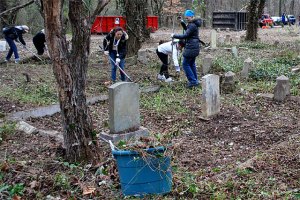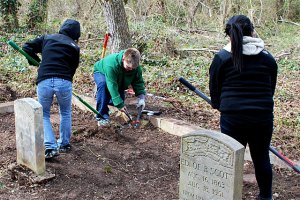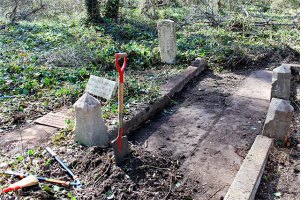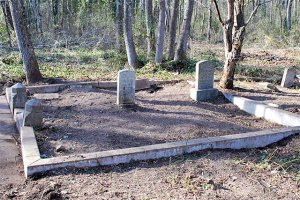I attended the Night of Storytelling and book signing for the James River Journal: A Year in the Life of a River last week, and it was great to reconnect with Richmond Times-Dispatch friends, meet some new ones and learn a little more about the James.

Writer Rex Springston (left) and photographer P. Kevin Morley
Writer Rex Springston and photographer P. Kevin Morley of the RTD are former co-workers of mine, and men I look up to in the media profession. They are in the business for some of the same reasons I am — one of them being the love of storytelling.
Of course, another is a love of the James river. I enjoyed the monthly James River Journal series and hope the Times-Dispatch learned their lesson and continue to allow their journalists to do enterprise work.
The night had six speakers, not including Rex and Kevin. All had their hand in the newspaper series that was repackaged for the book. All had different stories to tell, but the theme of the night could easily have been “The James Is So Much Cleaner Now.”
I’ve read several history books on Richmond, and none of them touch on this dark side of the history of the James — at least not in-depth. Maybe I just haven’t read the right books.
When I came to Richmond in 1988, the river was relatively clean by sight and smell and I have never had this fear of the “dirty old James” that so many speakers brought up. I’ve certainly read newspaper and magazine articles, but Richmond’s history books seem to ignore this long and shameful period that lasted more than six decades. The trashing of the James had as much to do with shaping the history our city as the Falls of the James did in forcing Capt. Christopher Newport to stop at Shockoe Valley when his ships could sail no further up river.
Richmond used the river as its sewer in those days. Storm drains ran into the creeks and streams that feed directly into the James. Industry was largely unchecked. Fishing regulations weren’t strict. We had dams blocking fish from their spawning grounds. It was a mess, and we were killing all the nature that lived off and around the river. We were killing the perception of the river too — people didn’t respect it or protect it and no one wanted to play in it.
Bryan Watts, a biologist, spoke of the numbers of breeding eagle pairs being up to 130, osprey pairs up to 500 and great blue heron pairs up to 1,500. Those numbers are up from zero in the 80s. He would know — it’s his job to count and study them. The big cause for the loss of the birds was the chemicals DDT and Kepone.
Photographer David Everette was good to hear from and meet. He said he has been photographing the James since the 70s and he seldom goes to the river without his camera. He lamented that he chose not to photograph the bad things he had seen in the James in 70s and 80s and he wishes now that he had — for context — to emphasis just how good we have it these days.
People protect it now. Worship it even. Paddlers, bikers, bird watchers, fishermen, adventurers, businessmen, educators, fathers, mothers, children….so many levels of people appreciating and helping keep the James clean.
Snorkeler Chris Hull had some creative ideas to enhance the river. He suggested the City of Richmond should acquire Mayo Island and add it to the James River Park System. The city should complete renovations to the Pump House and reopen the canal to cruises from there.

This bridge over the Manchester Dam is ripe for creating a fantastic walkway between Brown's Island and Manchester
My favorite idea of his was to fix what would be a footbridge between Brown’s Island and the Manchester climbing wall. There is a rusty old bridge there now, but only maybe 15% of the bridge is accessible as a walkway. Extending it could create many more ways to enjoy and view the river and the downtown skyline. The multiple usages for this walkway with all the adventure games that Richmond hosts are exciting. So brilliant an idea that I’ve already walked across it many times in my mind.
Ralph White, manager of the JRPS, described the park as “wilderness in the heart of a city, managed by citizens….you.” He emphasized that how volunteers and communities manage the JRPS “is what defines us as a community.”

Ralph White, manager of the James River Park System
Ralph depends on an army of volunteers to keep the parks clean. He told a story of when he first was hired as park manager in the 80s, a time when the park was new and not respected like it is now. He encountered some very embarrassing graffiti in front of a class of children and called the city department in charge of having it removed. He was told it would take at least two weeks for them to get to that. Unacceptable. It had to come done immediately.
Ralph decided to do it himself, and from then on decided he would have volunteers get the job done if he couldn’t rely on help from city departments. He hasn’t looked back, and the JRPS has never had to take a step back either.
If you are reading this, then you have likely been to at least some part of the James River Park System or some spot on the James. On any weekend, no matter where you are, someone is working on a project to help the river. Volunteer to help, even for just an hour. You will feel better, and the river will be better for everyone.
 There is a new sculpture in Richmond at Rocketts Landing. “Deepwater Sponger” was lowered into place Thursday.
There is a new sculpture in Richmond at Rocketts Landing. “Deepwater Sponger” was lowered into place Thursday.  The cast iron figure is a short and stout sort, toting two weights and rests on a bed of concrete that is in the shape of machinery cogs. Definitely worth checking out on your way to diner or drinks at the restaurant next door, The Boathouse at Rocketts Landing.
The cast iron figure is a short and stout sort, toting two weights and rests on a bed of concrete that is in the shape of machinery cogs. Definitely worth checking out on your way to diner or drinks at the restaurant next door, The Boathouse at Rocketts Landing. WHAT: “Deepwater Sponger” at Rocketts Landing on at 5000 Old Osborne Turnpike.
WHAT: “Deepwater Sponger” at Rocketts Landing on at 5000 Old Osborne Turnpike. 










Comments & trackbacks